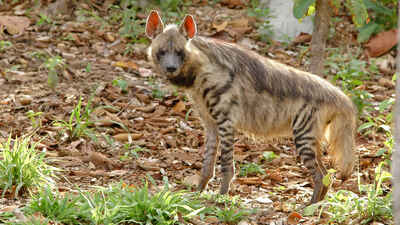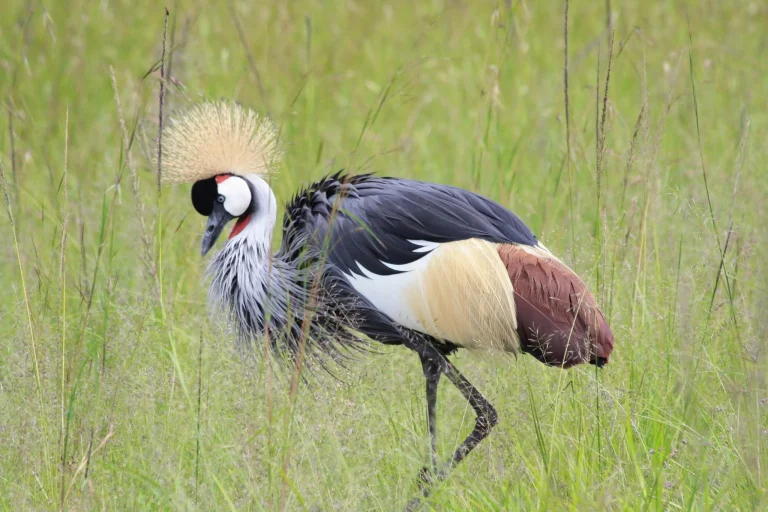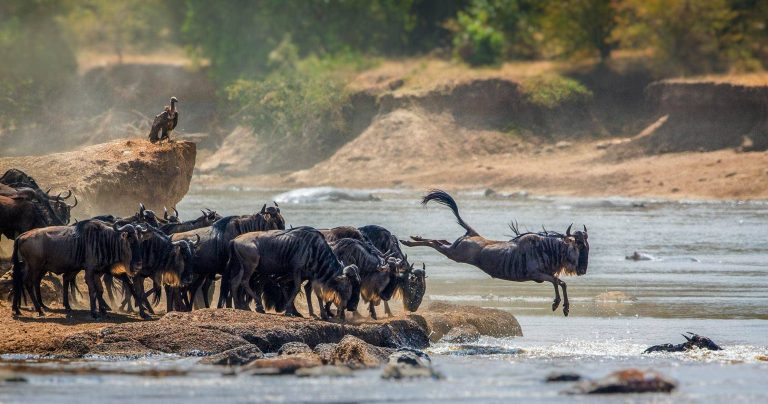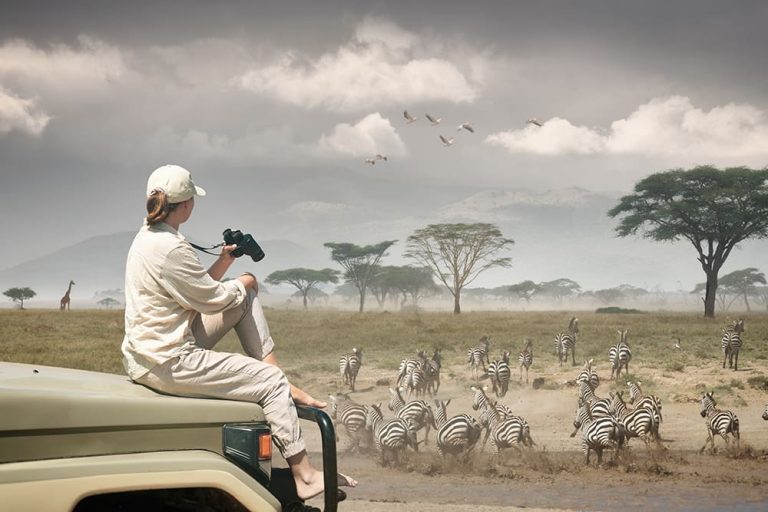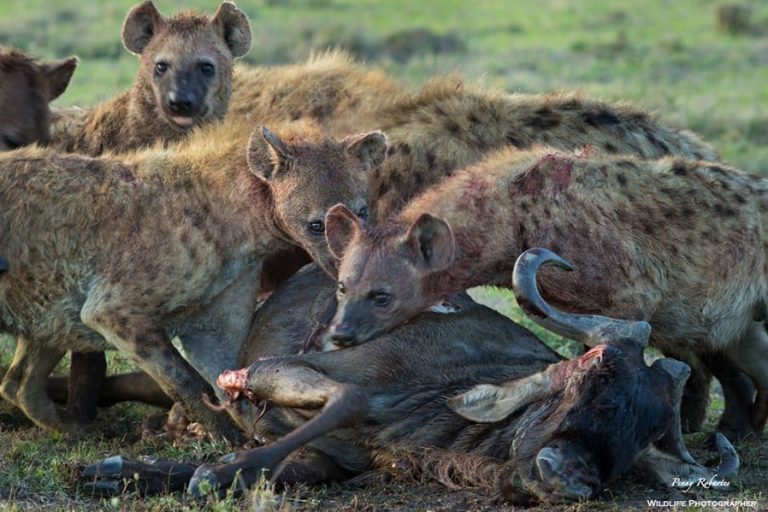Introduction: The Art of Vanishing in the Wild
The Serengeti, with its vast open plains, dense woodlands, and golden grasslands, is a land of constant predator-prey battles. While some hunters rely on brute force or sheer speed, others master the art of deception to survive. Camouflage is a critical survival strategy that allows certain predators to remain undetected, stalk prey unnoticed, and avoid confrontation with larger rivals. Among the most elusive of these stealthy hunters are leopards, caracals, and servals—each equipped with unique adaptations that make them nearly invisible in the wild.
This article delves into how these fascinating predators use their environment to their advantage, blending seamlessly into the Serengeti’s landscape through coloration, movement, and tactical intelligence.

Leopards: The Ghosts of the Serengeti
1. The Power of Perfect Camouflage
Leopards (Panthera pardus) are among the most elusive big cats, perfectly designed for stealth and ambush hunting. Their coat pattern, characterized by distinctive black rosettes on a golden background, provides the perfect blend of dappled sunlight filtering through trees and shadows in tall grass.
- Why It Works: The mottled coat breaks up the leopard’s outline, making it difficult for both prey and competitors to detect.
- Adaptability: Depending on the environment, leopards may exhibit slight variations in coat color—darker fur in dense forests and paler hues in open savannahs.
- Melanistic Leopards: Occasionally, black leopards (also called panthers) occur, with their dark coats making them virtually invisible in low-light conditions.
2. Stealthy Hunting Tactics
Leopards rely on secrecy and patience, stalking their prey within a few meters before launching a sudden attack.
- Low to the Ground: Leopards flatten their bodies and move in slow motion, minimizing rustling noises.
- Using Terrain: They use rock outcrops, tall grass, and dense foliage to stay out of sight.
- Silent Kills: Unlike lions that chase their prey in the open, leopards prefer quick ambush attacks, followed by suffocating bites to the throat.
3. Escaping Detection from Rivals
Leopards face threats from lions, hyenas, and humans, making camouflage crucial for survival.
- Tree-Dwelling Strategy: To avoid confrontations, leopards drag their kills up into trees, where competitors like hyenas can’t reach them.
- Nocturnal Movement: By hunting at night and resting in dense cover during the day, leopards reduce the risk of being spotted.

Caracals: The Silent Assassins
1. The Perfect Mid-Sized Predator
Caracals (Caracal caracal) are smaller than leopards but no less formidable. These feline predators thrive in semi-arid landscapes, grasslands, and woodlands, relying on their reddish-brown coats to blend seamlessly into the Serengeti’s dry terrain.
- Why It Works: Their uniform tawny fur mimics the surrounding earth and dried vegetation, making them hard to spot.
- Distinctive Ear Tufts: The long black ear tufts may serve to break up their silhouette or even mimic insect antennae, confusing potential threats.
2. Ambush Hunting & Aerial Precision
Caracals are masters of ambush and possess incredible agility, making them some of the most skilled aerial hunters in Africa.
- Leaping Ability: With powerful hind legs, caracals can jump over 3 meters (10 feet) high, snatching birds in mid-air.
- Silent Stalking: They creep through tall grass and rocky outcrops, keeping their heads low and bodies close to the ground before launching their attack.
- Nocturnal Strategy: Primarily hunting at dawn and dusk, caracals take advantage of low light to conceal their movements from prey and larger predators.
3. Staying Hidden from Competitors
As a mid-tier predator, the caracal must avoid detection by lions, leopards, and hyenas.
- Solitary Lifestyle: Unlike social predators, caracals remain solitary and territorial, reducing the likelihood of encounters with competitors.
- Burrowing & Hiding: They often rest in rock crevices or dense shrubs, staying out of sight during the hottest parts of the day.
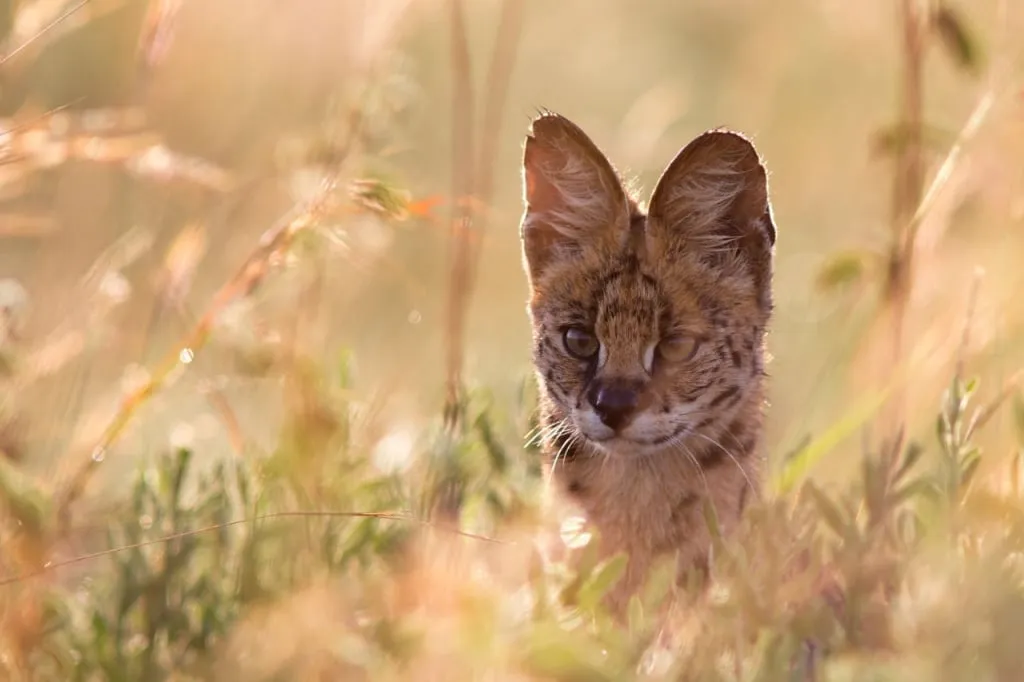
Servals: The Grassland Phantoms
1. Mastering the Art of Tall Grass Hunting
Servals (Leptailurus serval) are medium-sized wild cats that specialize in grassland hunting, relying on their spotted coats to blend into their environment.
- Why It Works: Their long legs and slender build allow them to move undetected through tall grass, where they remain nearly invisible to both prey and predators.
- Unique Spotting Patterns: No two servals have identical markings, making them uniquely adapted to breaking up their outline in different lighting conditions.
2. Precision Hunting Techniques
Servals are among the most specialized hunters, using keen senses and pinpoint accuracy to catch small prey.
- Hyper-Sensitive Hearing: Servals can detect the faintest movements of rodents, even underground, thanks to their oversized ears.
- Pouncing Technique: Instead of chasing, servals launch themselves high into the air, landing precisely on unsuspecting prey.
- Slow, Controlled Movements: Unlike cheetahs or lions, servals use slow, deliberate steps to avoid making noise, moving with extreme caution.
3. Evading Larger Predators
Servals face threats from leopards, hyenas, and larger birds of prey. Their survival depends on avoiding detection.
- Hiding in Grass: By lying flat and freezing motionless, servals become nearly undetectable.
- Activity Timing: Hunting primarily at twilight (crepuscular activity) minimizes encounters with lions and hyenas.
Why Camouflage Matters: The Evolutionary Advantage
Each of these predators has developed camouflage as an essential survival tool, influencing their hunting strategies, movement patterns, and ability to coexist with larger competitors.
| Predator | Primary Camouflage Strategy | Hunting Style | Main Threats |
|---|---|---|---|
| Leopard | Mottled coat blends into trees/shadows | Ambush & stealth | Lions, hyenas, humans |
| Caracal | Tawny coat mimics dry grass & earth | Aerial hunting & ambush | Leopards, jackals, eagles |
| Serval | Spotted coat blends into tall grass | Pounce & precision | Leopards, hyenas, birds of prey |
Conclusion: Nature’s Masters of Disguise
In the vast expanse of the Serengeti, where the rule of survival is dictated by both power and strategy, camouflage is the ultimate weapon for these elusive predators. Whether it’s the stealthy leopard, the agile caracal, or the silent serval, each of these hunters has honed the ability to disappear into their surroundings, ensuring both their success as predators and their safety from larger foes.
For wildlife enthusiasts and photographers, spotting these masters of disguise is a rare and rewarding experience. The next time you embark on a Serengeti safari, keep your eyes peeled—there’s always something hiding in plain sight.



